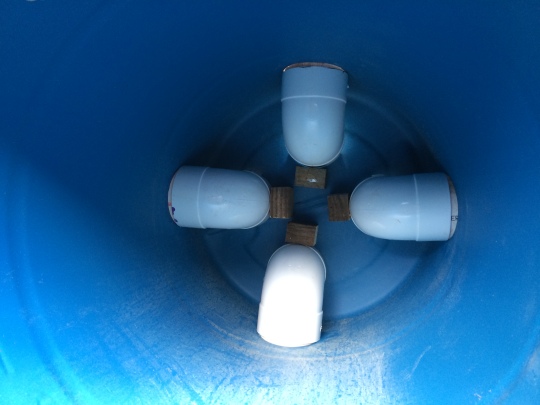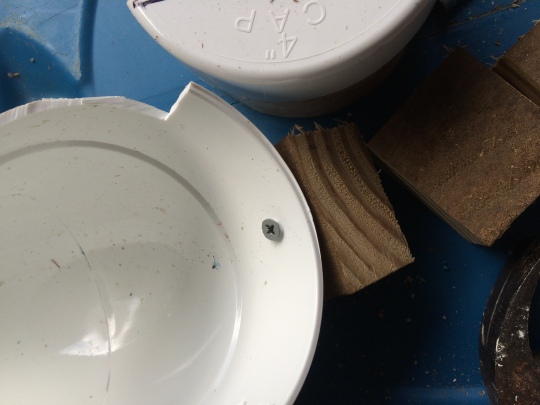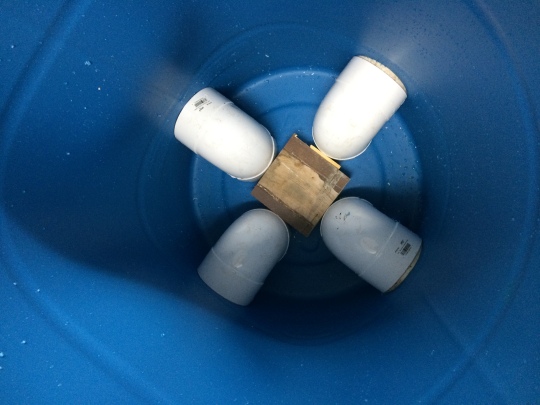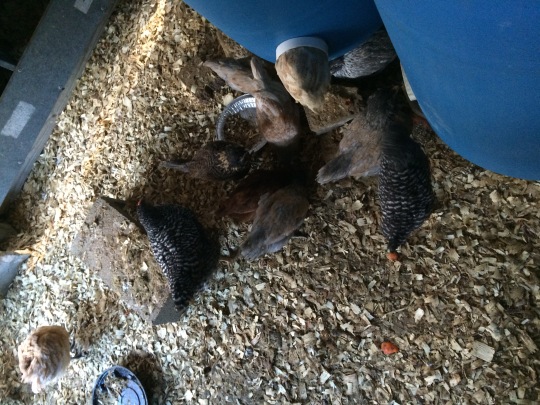We saw a few great ideas on Youtube about using PVC drain pipe parts to make a chicken feeder out of a bucket or barrel. I found a good local source for 30-gallon blue barrels that came from the soda bottling plant. Just as with the many 55-gallon barrels that I have used for rain collection, I don’t buy used barrels unless I am confident about what they were last used for. In this case it was easy to tell, since the barrels still had the markings from the soda bottler, and they had a distinct smell of Mountain Dew.
The theory is to set the elbows so that they stick through the sides of the container, requiring the chickens to stick their heads into the 4″ hole to eat. This should minimize waste and make it much harder for mice and other critters to get to the food.
Each elbow is attached to a block of wood with a screw like this one:
And then I ran a second screw up from the bottom of the barrel into the same block. For a second feeder I used a slightly cleaner method of one block to serve all four pipes.
I used a 4-1/4″ hole saw to make the holes in the barrel. This is the outer diameter of the drain pipe, though not the outer diameter of the flange on the elbow. This made it necessary to use a 3-inch long piece of 4-inch pipe to protrude through the barrel.
Before attaching the elbows to the wood, I cut a section of the lower flange off to allow the feed to flow into the opening. I had to guess about what size to use, and went with about an inch on the first feeder. This proved to be not quite enough, especially for a pelletized feed. 1-3/4 inches worked a little better.
The barrels that I purchased were “closed top,” meaning that the only way in or out is through the small bung hole. To build the feeder I had to cut the top off with a reciprocating saw, just as I usually do when making rain barrels. This left us with a need for some type of top. What we came up with was a storage cover like this one:
The cover is about 3″ larger in diameter than the top of our barrels, so it is a pretty loose fit. On one feeder I secured it with a bungee cord, but on the second I just used a brick on top. You can find the covers here.
One idea that we tried, but do not recommend, is to put a lip on the outside of the short length of pipe, like this:
We thought this might reduce waste further. Instead it created a place for young ones to get stuck. One little hen that we named “Chuck” because she kept getting stuck eventually died because we didn’t realize that she was in there.
If the chicks are small enough to get both of their feet into the elbow, then they are doomed. We have also had a chick get stuck on the feeder with the larger bottom opening when it ran out of food. She got into the elbow and stuck her head through the slot sideways, which she wouldn’t have been able to do if the feeder had been full. I would say that the safest bet is to keep these feeders available for full-grown birds, and not use them with chicks.
 Happy Egg Farm
Happy Egg Farm




